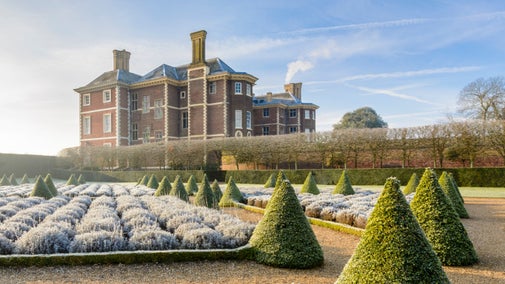
Discover more at Willington Dovecote and Stables
Find out when Willington Dovecote and Stables is open, how to get here, things to see and do and more.

The stables and dovecote at Willington were built during the late 1530s as part of the new manorial complex commissioned by Lord of the Manor, John Gostwick. The dovecote is one of the largest and best-preserved examples of a 16th century dovecote in England. Here’s what to look out for when you visit.
Looking around the stables today you will see plenty of evidence showing how the building was used as stables, including four loose horse boxes on the ground floor, each with space for a horse. However, the brick floor is not thought to be more than 200 years old, so what was the building used for before 1800?
Indeed, the whole building is rather puzzling. As you walk around, look out for openings in the walls that have been closed up. At one time the windows were glazed and there’s evidence that there may have been an entrance from the outside to the upper floor.
Originally the layout upstairs was very different. The partitions were moved to divide up the north end of the upper floor to store a variety of foodstuffs for the horses below.
Today the building is roofed in hand-made tiles, but it may originally have been thatched. The roof is very steep and unusually there are two different designs of roof timbers.

It’s believed that King Henry VIII held his council meeting at Willington and if so, would have needed to offer lodgings fit for a King. It's possible Gostwick remodelled an earlier farm building to make accommodation for extra guests on the first floor of this building, or perhaps it could have been a hunting lodge or a banquet hall? Whatever the truth of it is, this is a high-status building, generally considered too extravagant to have been built originally as a stable.

Willington Dovecote is one of the largest and best-preserved examples of a 16th century dovecote in England. Step inside and you’ll be surrounded on all sides by tall walls featuring 1,500 nesting boxes, built to house around 3,000 pigeons. Each pair would produce new squabs (baby pigeons) every few weeks and the noise and smell would have been overpowering.
The dovecote would have been painted white to attract the pigeons, and the stepped gables made an ideal perch from which to keep a lookout for predators. The pigeons entered the dovecote through the louvres in the roof, flew down through trap doors to the nesting boxes in the dark chambers below, where they would have been safe from the birds of prey.
In the past, pigeons were kept by the important and wealthy as a luxury food. The dovecote at Willington is unusually large for a country manor and would have been a clear statement of the importance of the Lord of the Manor.
John Gostwick, who paid for the dovecote to be built, sometimes gave pigeons as presents to his friends.
At the end of the summer the lord of the manor would select the best birds for breeding the next year and perhaps give the older birds to his servants to cook for their families and put into pies.

Find out when Willington Dovecote and Stables is open, how to get here, things to see and do and more.
Discover how Lord of the Manor John Gostwick’s role in the dissolution of the monasteries led to the creation of an impressive manorial complex at Willington over 450 years ago.

Discover the smaller, quirky houses and buildings to visit around Essex, Bedfordshire and Hertfordshire, including a mill, a barn and a dovecote.

Historic houses and buildings are full of stories, art and collections. Learn more about their past and plan your next visit.
